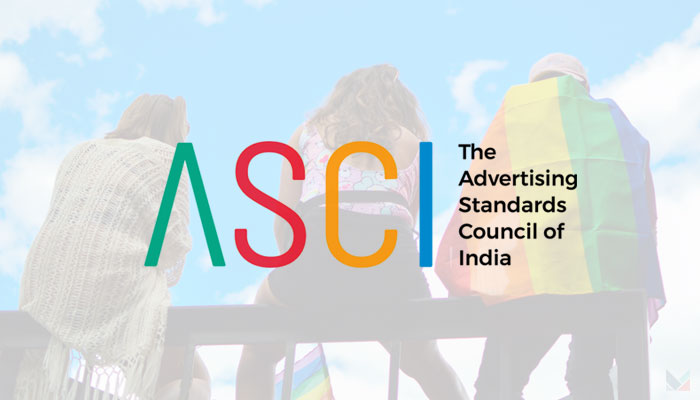Description

Copyright infringement not intended
Picture Courtesy: https://theprint.in/economy/advertisement-authority-acted-against-101-advertisements-featuring-celebrities/2097994/
Context: The Advertising Standards Council of India (ASCI) has processed complaints against 101 advertisements featuring celebrities, revealing that they continued to appear in ads violating the ASCI code.
Overview of ASCI's Actions
Complaints Against Celebrity Ads
- Advertisements Reviewed: ASCI processed complaints against 101 advertisements featuring celebrities. These ads were found to be in violation of the ASCI code, which outlines ethical guidelines for advertising in India.
- Violation Details: Celebrities appeared in these ads without providing evidence of due diligence, as required under the Consumer Protection Act, 2019. This act mandates that all claims in advertisements must be verified and truthful.
Categories of Violations
- Personal Care: 22% of the violations involved personal care products. These could include advertisements for cosmetics, skincare products, and personal hygiene items.
- Food and Beverages: 21% of the violations were in the food and beverage sector. These ads might make unverified health claims or mislead consumers about the benefits of the products.
- Illegal/Betting: 20% of the violations were related to advertisements promoting illegal betting activities. Such ads often violate legal standards and ethical guidelines.
- Healthcare: 9% of the violations were in healthcare advertisements. These could include unsubstantiated claims about the efficacy of medical treatments or products.
- Durables: 6% of the violations involved durable goods, such as home appliances or electronics, where ads might have made false claims about product features or performance.
Nature of Violations
- Misleading Claims: 81% of the violations were due to misleading claims. This includes false or exaggerated statements about product benefits, which can deceive consumers.
- Harmful Situations or Products: 34% of the violations were related to advertisements that promoted harmful situations or products. These could include ads encouraging unsafe behaviours or promoting products that could be harmful to health.
|
Digital vs. Print/TV Ads
●Proportion: Digital ads accounted for 85% of the ads processed by ASCI. This high percentage reflects the growing prevalence of digital marketing.
●Compliance Rate: Digital ads had a lower compliance rate of 75% compared to 97% for print and TV ads. This suggests that digital advertising platforms may have less stringent oversight or that advertisers take more liberties in digital spaces.
|
Advertising Standards Council of India (ASCI)
- The Advertising Standards Council of India (ASCI) is a voluntary self-regulatory organization established to ensure ethical advertising practices in India.
Origin and Establishment
- ASCI was established in 1985 by the four main constituents of the advertising industry: advertisers, advertising agencies, media, and allied professions such as market research and consulting.
- ASCI is registered as a non-profit company under Section 25 of the Company Act (now Section 8 under the Companies Act, 2013).
Objectives and Code for Self-Regulation
ASCI aims to maintain and enhance public confidence in advertising. It ensures that advertisements are:
- Truthful: Ads must be honest about the claims they make.
- Legal: Ads must comply with all relevant laws.
- Decent: Ads should not be offensive or indecent.
- Not Hazardous or Harmful: Ads should not promote dangerous products or unsafe behaviour.
- Fair Competition: Ads should not unfairly disparage competitors.
Scope of ASCI
- ASCI looks into complaints across all media including print, TV, radio, hoardings, SMS, emailers, internet/websites, product packaging, brochures, promotional material, and point-of-sale material.
- ASCI ensures advertisements protect the interests of consumers and do not mislead them.
Recognition and Collaborations
- Various government bodies, including the Department of Consumer Affairs, the Food Safety and Standards Authority of India (FSSAI), the Ministry of AYUSH, and the Ministry of Information and Broadcasting, have acknowledged ASCI’s role.
- In January 2017, the Supreme Court of India affirmed ASCI’s self-regulatory mechanism as an effective step in regulating advertising content on TV and radio.
- ASCI is part of the Executive Committee of the International Council on Ad Self-Regulation (ICAS).
Organizational Structure
- Board of Governors: Comprising 16 members, with four representatives from each sector: advertisers, advertising agencies, media, and allied professions.
- Consumer Complaints Council (CCC): Consists of about 28 members, including industry professionals and civil society members like doctors, lawyers, journalists, academicians, and consumer activists. The CCC’s decision on complaints is final.
- Secretariat: An independent body of five members headed by the Secretary-General.
Functions and Process
- Complaint Handling: Individuals can lodge complaints about objectionable advertisements. The CCC deliberates on these complaints, providing due process to advertisers to defend their ads.
- Action on Complaints: Based on whether the ad aligns with the ASCI code and laws, the complaint is either upheld or not upheld. If upheld, the ad is voluntarily withdrawn or modified.
- Regulation Enforcements: In 2007, the Government of India amended the Cable TV Network Rules’ Advertising Code to disallow ads violating the ASCI code on TV.
Achievements and Impact
- ASCI has received several awards from the European Advertising Standards Alliance (EASA), including Gold Global Best Practice Awards for its mobile app "ASCIonline" and for reducing complaint processing times.
- By promoting honest and decent advertising, ASCI helps reduce false claims and unfair ads, thereby increasing respect for advertisers and protecting consumer interests.

Conclusion
- ASCI plays a crucial role in the Indian advertising landscape by ensuring ethical standards are met, protecting consumer interests, and promoting fair competition. Its voluntary, self-regulatory approach helps maintain the credibility and integrity of advertising while avoiding the need for excessive governmental regulation.
Source:
The Print
Wikipedia
|
PRACTICE QUESTION
Q. What are the major challenges faced by the Indian government in its efforts to promote digital literacy and bridge the digital divide, particularly in rural and remote areas of the country? How can these challenges be effectively addressed?
|














